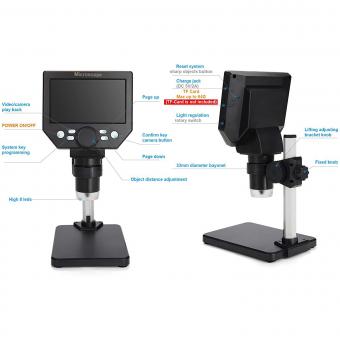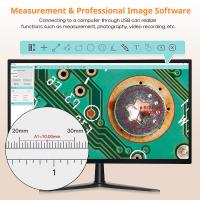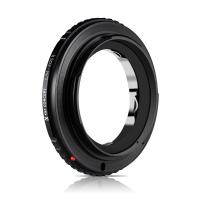What Can You See With A Confocal Microscope ?
A confocal microscope is a specialized type of microscope that uses a laser beam to illuminate a sample and a pinhole aperture to eliminate out-of-focus light. This allows for the capture of high-resolution, three-dimensional images of a sample. With a confocal microscope, you can see the internal structures of cells, tissues, and even whole organisms with incredible detail. This includes the arrangement of organelles within cells, the distribution of proteins and other molecules, and the morphology of tissues and organs. Confocal microscopy is commonly used in biological research, particularly in the fields of cell biology, developmental biology, and neuroscience. It is also used in medical diagnostics, such as in the examination of tissue samples for cancer diagnosis.
1、 High-resolution imaging of biological samples
With a confocal microscope, it is possible to see high-resolution images of biological samples. This type of microscope uses a laser to scan the sample and create a 3D image of the specimen. The laser is focused on a single point, and the emitted light is collected by a detector. The detector then creates an image of the sample, which can be viewed on a computer screen.
Confocal microscopy has revolutionized the field of biology by allowing researchers to see the internal structures of cells and tissues in great detail. This technique has been used to study a wide range of biological processes, including cell division, protein localization, and gene expression.
The latest point of view on confocal microscopy is that it is an essential tool for studying the complex structures and functions of living organisms. It has become an indispensable tool for researchers in many fields, including neuroscience, developmental biology, and cancer research.
In addition to its high-resolution imaging capabilities, confocal microscopy has several other advantages over traditional microscopy techniques. For example, it can be used to image thick samples, such as whole tissues, without the need for sectioning. It also allows for the visualization of fluorescently labeled molecules in living cells, making it possible to study dynamic processes in real-time.
Overall, confocal microscopy has transformed the way we study biology and has opened up new avenues for research. Its ability to provide high-resolution images of biological samples has allowed researchers to gain a deeper understanding of the complex structures and functions of living organisms.

2、 3D visualization of cellular structures
A confocal microscope is a powerful tool used in biological research to visualize cellular structures in three dimensions. With this microscope, researchers can obtain high-resolution images of cells and tissues, allowing them to study the intricate details of cellular structures and processes.
One of the main advantages of a confocal microscope is its ability to produce 3D visualizations of cellular structures. This is achieved by using a laser to scan a sample point by point, and then reconstructing the image in three dimensions. This allows researchers to see the spatial relationships between different structures within a cell or tissue, and to study how these structures interact with each other.
In addition to its ability to produce 3D visualizations, confocal microscopy has also been used to study a wide range of biological processes, including cell division, protein localization, and gene expression. By using fluorescent dyes and markers, researchers can label specific structures within a cell and track their movements over time.
Recent advances in confocal microscopy have also allowed researchers to study living cells in real-time. This has opened up new avenues for research, as it allows researchers to observe cellular processes as they happen, rather than relying on static images.
Overall, the confocal microscope is an essential tool for biological research, allowing researchers to study the complex structures and processes that make up living organisms. Its ability to produce high-resolution 3D visualizations and study living cells in real-time make it an invaluable tool for understanding the fundamental processes of life.

3、 Fluorescence imaging of living cells
With a confocal microscope, it is possible to see the internal structures of living cells with high resolution and clarity. This is achieved through the use of laser technology and a pinhole system that eliminates out-of-focus light, resulting in sharper images.
One of the most common applications of confocal microscopy is fluorescence imaging of living cells. This involves labeling specific molecules or structures within the cell with fluorescent dyes or proteins, which can then be visualized under the microscope. This technique allows researchers to study the dynamics of cellular processes such as protein trafficking, cell division, and signaling pathways.
In recent years, confocal microscopy has also been used to study the behavior of individual cells within complex tissues and organs. This has led to new insights into the mechanisms of disease and the development of new therapies. For example, researchers have used confocal microscopy to study the behavior of cancer cells in real-time, allowing them to identify new targets for treatment.
Overall, confocal microscopy is a powerful tool for studying living cells and tissues at the molecular level. Its ability to provide high-resolution images of dynamic processes has revolutionized our understanding of cellular biology and has the potential to lead to new breakthroughs in medicine and biotechnology.

4、 Analysis of protein localization and dynamics
With a confocal microscope, it is possible to see the three-dimensional structure of cells and tissues with high resolution and clarity. This makes it an invaluable tool for analyzing protein localization and dynamics within cells.
Confocal microscopy works by using a laser to scan a sample point by point, and then reconstructing the image from the data collected. This allows for the visualization of structures that would be difficult or impossible to see with other types of microscopy.
In terms of protein localization, confocal microscopy can be used to determine where a particular protein is located within a cell or tissue. This can be done by labeling the protein with a fluorescent tag and then imaging the sample with the confocal microscope. By analyzing the resulting images, researchers can determine the precise location of the protein within the cell.
Confocal microscopy can also be used to study protein dynamics, or how proteins move and interact within cells. This can be done by imaging cells over time and tracking the movement of fluorescently labeled proteins. By analyzing these images, researchers can gain insights into how proteins function within cells and how they interact with other cellular components.
Overall, confocal microscopy is a powerful tool for studying protein localization and dynamics within cells. With advances in technology, such as super-resolution microscopy, researchers are able to achieve even higher levels of resolution and detail, allowing for even more precise analysis of cellular structures and processes.







































